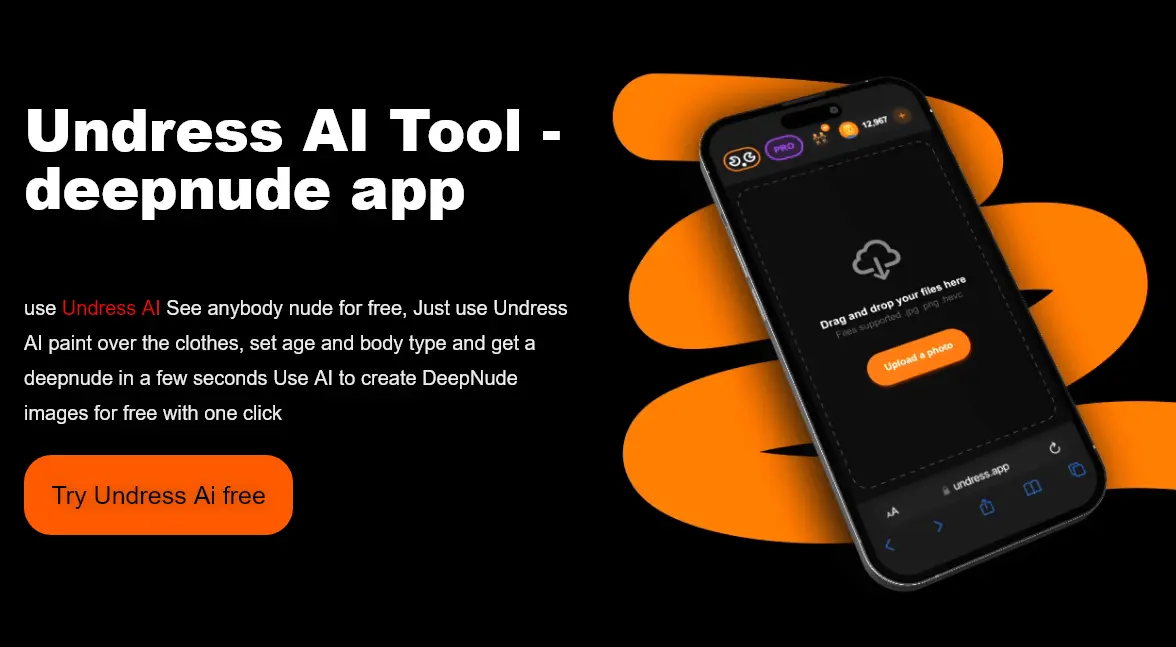Is it possible to instantly and convincingly alter the visual reality of an image, stripping away clothing with the touch of a button? The rise of AI-powered "undress" tools suggests a resounding yes, and their capabilities are rapidly reshaping the landscape of digital imagery, for better or worse.
These innovative applications, fueled by sophisticated artificial intelligence algorithms, are no longer relegated to the realm of science fiction. They are readily available, often easily accessible, and capable of performing tasks that were once the exclusive domain of skilled professionals with years of experience. From the removal of clothing to the swapping of faces, these tools offer a level of manipulation previously unimaginable. This accessibility raises a multitude of ethical and practical questions, prompting urgent conversations about privacy, consent, and the potential misuse of such powerful technologies. These are not mere novelties; they are complex instruments that demand careful consideration.
Let's delve into the fascinating, and at times unsettling, world of AI-driven image manipulation, exploring the tools, the techniques, and the implications of this rapidly evolving field.
Understanding the Undress AI Landscape
The core function of these AI-powered tools is, fundamentally, the automated removal of clothing from images. This is achieved through the application of deep learning models trained on vast datasets of images. These models learn to identify and differentiate between clothing and skin, allowing them to "understand" how to remove clothing and reveal the underlying form. The process can range from relatively simple automated techniques to more advanced methods that incorporate face swapping and realistic rendering of the body beneath the removed garments.
Several key features differentiate these tools, including:
- Accuracy: The precision with which the AI identifies and removes clothing is paramount. High accuracy ensures a more believable and less distorted final image.
- Speed: Many tools boast the ability to process images rapidly, enabling users to undress numerous photographs within a short timeframe.
- Ease of Use: User-friendliness is a crucial factor. Simple interfaces with minimal required technical skills make these tools accessible to a wider audience.
- Seamless Transitions: The most sophisticated tools offer realistic transitions, taking into account lighting, shadows, and body proportions to create a believable outcome.
Several applications are emerging as leaders in this niche, each presenting its unique set of features.
- Doordash Super Bowl Sweepstakes Everything You Need To Know
- Nj Vehicle Registration Renew Online Inperson More
Key Players in the AI Undress Arena
One such tool, "Undress Love," positions itself as an AI clothes remover adept at face switching in photos and videos, aiming for seamless transitions that appear realistic. Another entry, "Undress AI Tool," is promoted as a free "deepnude" application boasting a potent photo undresser that can swiftly strip characters in images. The simplicity is the key to their potential appeal. The user uploads an image and employs a brush to pinpoint clothing areas for removal, letting the AI manage the rest.
Another player is "Mimicpc AI," which focuses on the AI clothes removal workflow, streamlining the process and hopefully improving the quality of the output.
For those seeking a more creative approach, "Onlyfakes" offers a different avenue. By initiating a detailed text prompt that describes an AI character, the user can then generate an image. Post-generation, the AI dress remover tool can be applied to modify the character's attire. The result is then available for download and further manipulation. It's a more integrated process.
The emphasis is on virtual undressing, with a keen focus on both accuracy and a positive user experience. Some systems are designed for full clothing removal, delivering a flawless and seamless result. Others offer limitless possibilities, free from restrictions. The AI's ability to accurately remove all types of clothing, is what drives the user experience.
How the Tools Work
The mechanisms behind these AI-powered undressing tools are, in essence, rooted in the principles of machine learning, particularly deep learning. These complex algorithms are trained on vast datasets of images. The data teaches the AI to recognize the features of clothing, the contours of the human form, and the variations in skin tones and textures. The process can be broken down into a few core steps:
- Image Input: The user uploads an image to the tool.
- Object Detection: The AI analyzes the image, identifying the presence of clothing and the areas of skin beneath. This involves object detection algorithms that have been trained to recognize various clothing types.
- Clothing Removal: The AI either directly removes the clothing or attempts to create a believable rendering of the body beneath. Some tools utilize generative adversarial networks (GANs) to create realistic images of the exposed body.
- Refinement: Sophisticated tools employ techniques to refine the image, correcting for any distortions or inaccuracies. This may include smoothing skin textures, adjusting lighting, and incorporating shadows to create a more natural appearance.
- Output: The final, modified image is presented to the user.
The complexity of the process depends heavily on the sophistication of the AI model and the specific features of the tool.
Ethical Considerations
The rise of AI undress tools raises profound ethical questions. The primary concern revolves around the potential for non-consensual image manipulation. These tools can be used to create explicit images of individuals without their knowledge or permission, potentially leading to harassment, cyberbullying, and reputational damage. The ease of use and accessibility of these tools amplifies the risk, as anyone with a smartphone or a computer can utilize them.
Here are some of the key ethical considerations:
- Consent: The central ethical issue is the lack of consent. These tools can be used to create images of individuals without their permission, violating their privacy and autonomy.
- Misuse and Abuse: These tools can be misused for malicious purposes, including the creation of revenge porn, the harassment of public figures, and the spread of misinformation.
- Deepfakes and Disinformation: The technology can be used to create "deepfakes," or manipulated images and videos, that can be used to spread disinformation, damage reputations, and influence public opinion.
- Legal and Regulatory Challenges: Existing laws may not adequately address the ethical implications of AI undress tools. New regulations are needed to protect individuals from the potential harms of this technology.
As these tools become more widespread, there is a corresponding need for robust legal frameworks and ethical guidelines.
It is essential for developers, platforms, and policymakers to address the ethical implications of these tools, implementing safeguards and promoting responsible use. These include consent, reporting mechanisms, and education about the risks associated with the technology.
Practical Applications and Creative Uses
While ethical concerns are paramount, these tools also present some interesting applications in a creative context. They could be useful in fashion design, allowing designers to visualize clothing on different body types or explore different styles. These tools can also be used for artistic endeavors, enabling artists to create compelling imagery and explore new forms of expression. Here are some other possibilities:
- Fashion Design and Styling: Visualize how clothing items will appear on a model.
- Artistic Expression: Artists use them to create surreal or symbolic images.
- Educational purposes
- Creative Projects: Enhance portraits and swap outfits for fun.
Conclusion
AI-powered undress tools represent a significant leap forward in the field of image manipulation. They offer incredible capabilities, but the ethical implications of these tools are serious and potentially far-reaching. As this technology develops, there must be careful consideration of the risks. The responsibility lies with developers, users, and policymakers to establish guidelines, enforce regulations, and promote responsible use.
The future of these tools is complex, and their place in the digital landscape is uncertain. As we move forward, it is crucial to maintain an informed and critical perspective, recognizing both the possibilities and the potential pitfalls of this powerful technology.



Detail Author:
- Name : Daryl Lang
- Username : adam42
- Email : armstrong.jessie@hotmail.com
- Birthdate : 1979-05-10
- Address : 50197 Marcelle Center Apt. 628 McCulloughchester, HI 29156-3126
- Phone : (240) 836-9780
- Company : Langworth-Murray
- Job : Baker
- Bio : Voluptas ut ut voluptas et modi. Est ut ab est ratione qui nemo. Et est eos consequatur consequatur est pariatur.
Socials
tiktok:
- url : https://tiktok.com/@emiliabernier
- username : emiliabernier
- bio : Incidunt aut quisquam in qui dignissimos vel.
- followers : 2229
- following : 2964
twitter:
- url : https://twitter.com/berniere
- username : berniere
- bio : Quos ipsam facilis iure neque rerum dolores omnis excepturi. Amet ex perferendis et qui ducimus. Repudiandae dicta a ut illo laboriosam qui est veritatis.
- followers : 237
- following : 2940